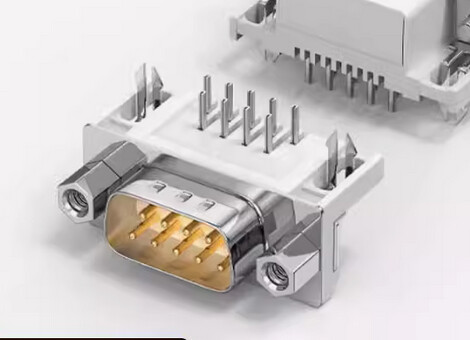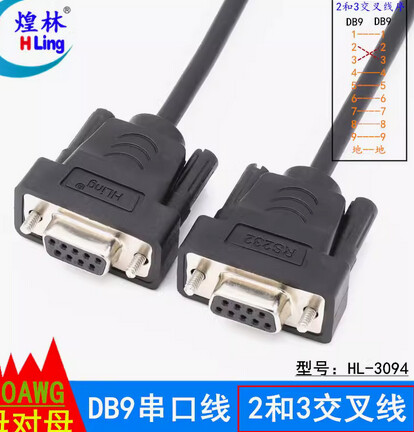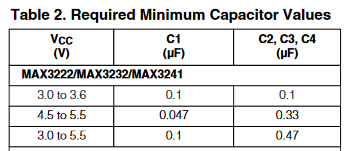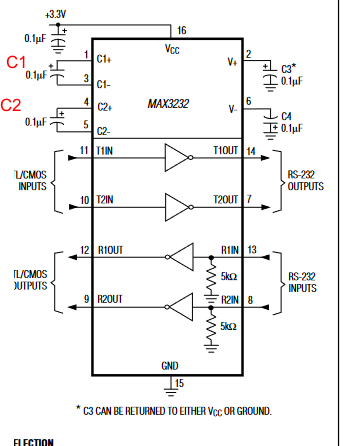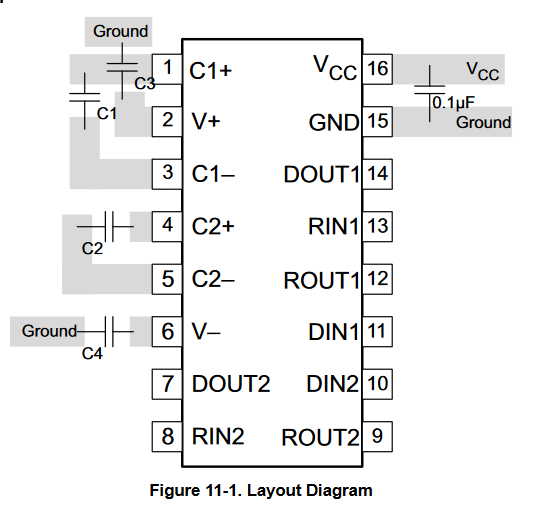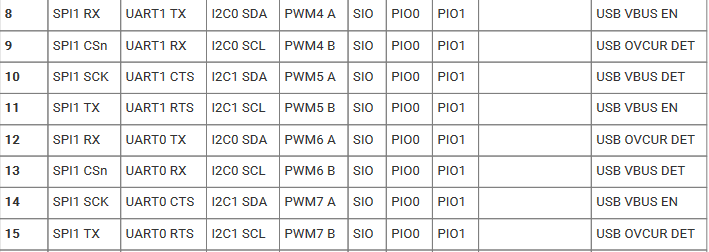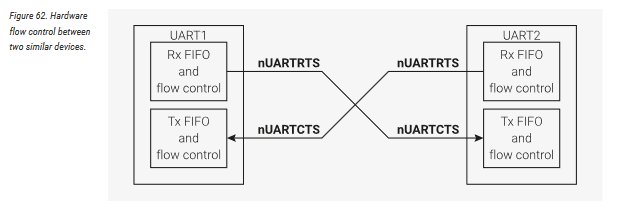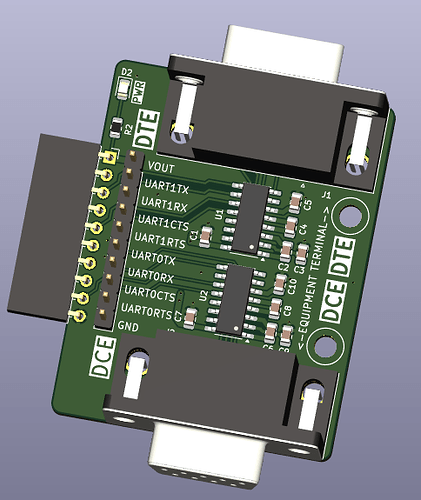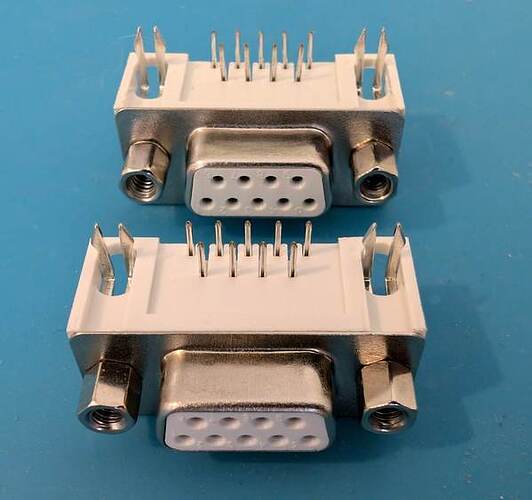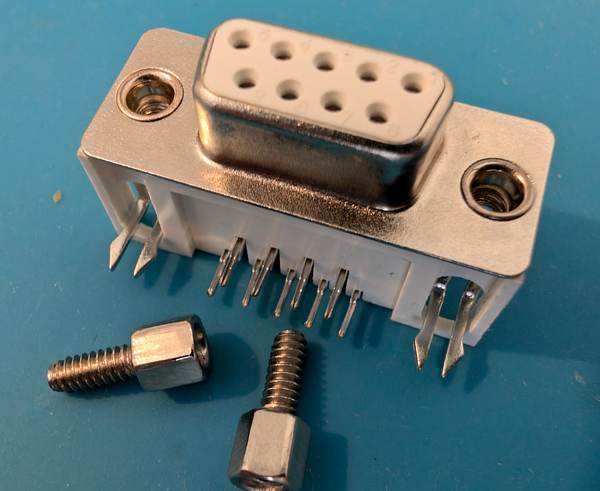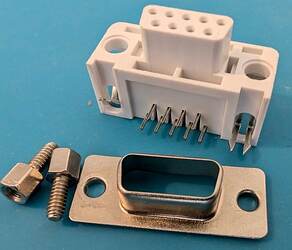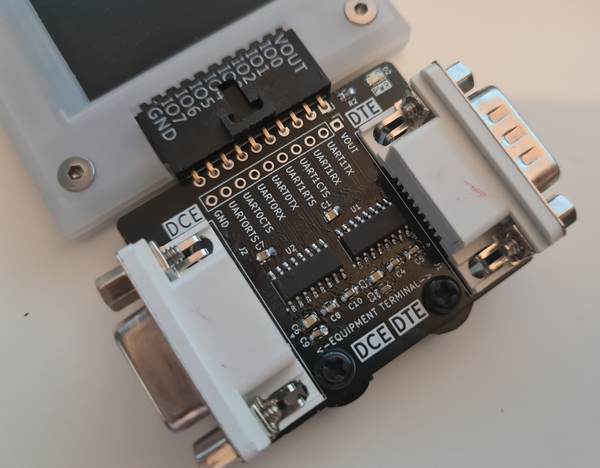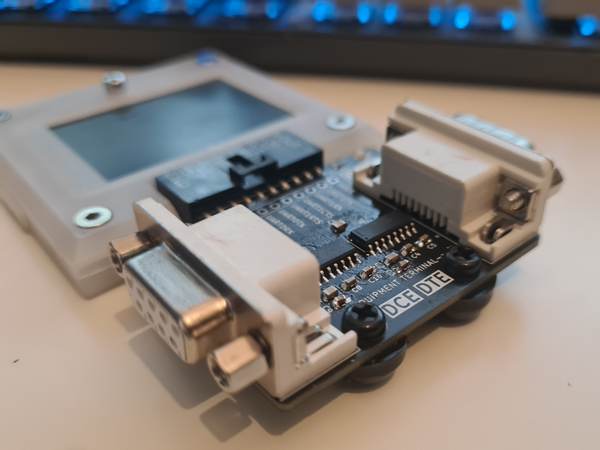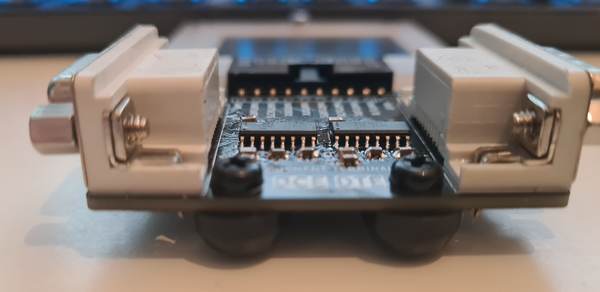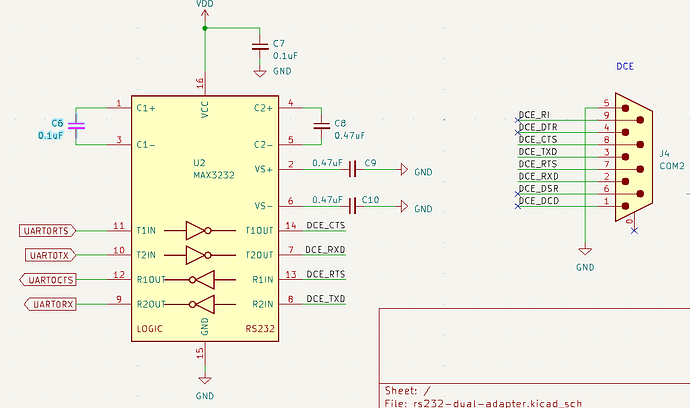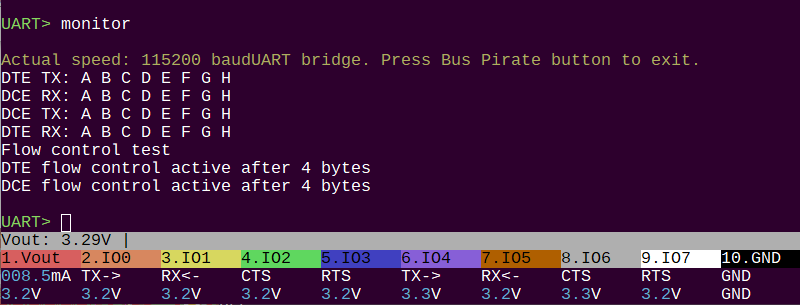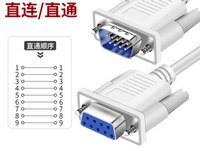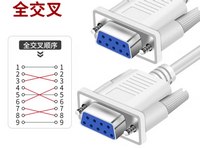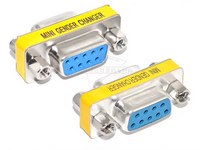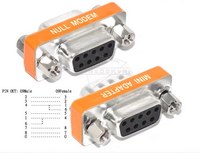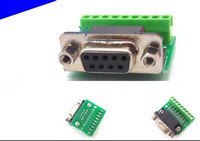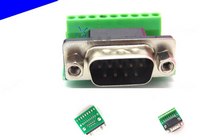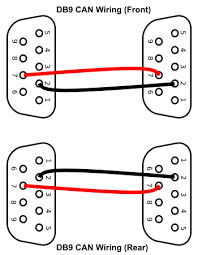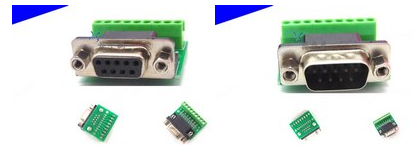What I gathered from Wikipedia, etc:
- Male connector is Data Terminal Equipment (DTE), what you’d see on the back of a computer (in a forgotten time)
- Female connector is Data Control Equipment (DCE), what you’d see on the back of eg a modem (but not really, modems had DB25 as I recall, but you get the point)
- Serial cables are 1:1, wired straight through
- The DCE side has TX/RX and CTS/RTS swapped, so a straight through cable works properly
- None of this is standard at all, so you end up with a mess of null modem cables (crossing RX/TX, sometimes CTS/RTS, sometimes with a few pins tied together to fool equipment into thinking something is attached, these are all over too)
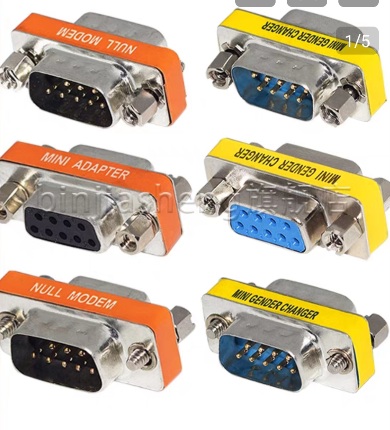
Then there are gender changers and null modem adapters like these. The gender changers are inexpensive (1.8kuai), the null modem are a lot more (8.5kuai).

Currently there is one DTE and one DCE on the board, which is connected by a 1:1 male:female serial cable.
I think it’s feasible to include one male to male and one female to female adapter with the plank. However, that won’t swap the pins, so it is more handy for weird connections or when you lack the proper cable, than it is for using the ports properly. The null modem adapters will probably be available in the store as an option - note that they only swap RX/TX, not CTS/RTS.
Null modem cables are probably a cheaper option than the adapters, but also bulkier. I found a cable supplier that provides enough info on the cables to know the correct pinout.
Still to-do:
- Finish test program
- Taller standoffs to support the weight of the board
Feedback requested
Genuine Maxim 3232s are rated for 235kbps (125kbps at full load) transmission speed, but cost more than $1 per chip.
Clones, I like HGSemi, cost peanuts and claim to work at 250kbps (light loads I assume).
This is pretty old tech, and I assume most max speeds are 115kbps, so I have no problem using a clone personally. However I’d welcome any feedback.
This might be a good opportunity to do a “HQ” vs budget version of the board. One with $$$ chips, and one with $ chips. I’d like to do this on a project to demonstrate what happens when you “bargain” with your Chinese supplier. Usually you don’t get a better deal, you get poorer quality at a fair price.
This board can be in production by end of week if I get some kind of test command going and choose a standoff (7mm or so).
![]()
